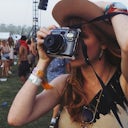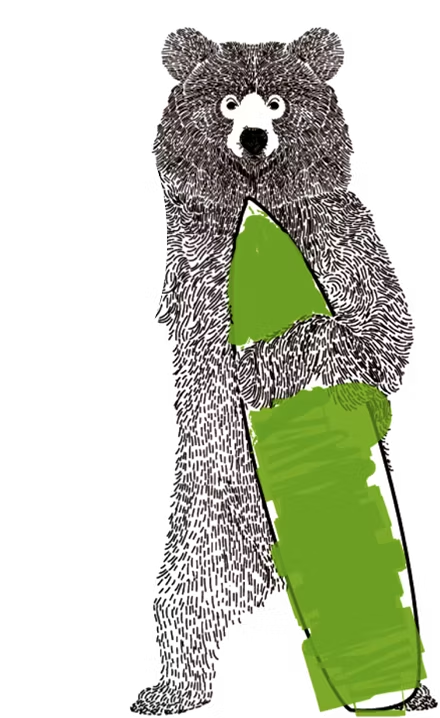Developing an eye for photography is usually in reference to shooting pictures with a camera. While as a designer you may not have to know enough to take your own photographs, you should know how to select the best ones.
You need to be able to look at photography critically, understanding how the image functions so that you can use it to help impart your message, both thematically and aesthetically.
1. The starting point
_

Start by checking for these five critical components:
Subject
What is the image of? Is it abstract or figurative? Does it depict a person or product, or impart a feeling or idea? When you’re answering these questions, look deeper than just at a single object, but how the components of an image interact with one another. The story that the interactions between subjects on the picture imparts. Some images are straightforward, and some have more hidden meanings.
As an example, here’s a good article on A guide to using photography as metaphor in graphic design
Composition
This is a big one, and encompasses a lot of different techniques. What tools has the photographer used to create emotion or meaning in the picture? You can look at framing, dominance and hierarchy, fore/middle/background, alignment, and more. The use of these techniques can make or break a photo – helping it to achieve a goal, or distracting the user with a clunky photographic execution.
Read through our post on composition for more details.
Lighting
Photographs are made of light – literally. They’re the interpretation of light onto a page or screen, so you’ve got to be paying attention to how light is used in your imagery. Is it a soft light, or a hard one? Where is the source of the light, and how does the photographer use it to conceal or reveal aspects of the subject? What tone has the lighting imparted? The same image in different lightscapes can have vastly different meanings.
Color
A feature that’s a whole branch of study in and of itself: color theory. What is the dominant color palette of the image, and is there a color of them that first grabs your attention? How varied is the color selection in the imagery – is it a bright, multicolored shot or a dimmer or faded combination of somber tones?
Style/Aesthetic
This is essentially a combination of the above – how do all of those elements combine make you feel about the imagery? Is it a vivid, direct product shot, or a hazy hipster natural portrait? Each one has it’s own place in different kinds of design work, so selecting one specific style that you use consistently throughout your project is going to make a huge difference in how your final design comes across.
2. Tips and tricks
_

A great way of training your eye is to just know what’s out there. Don’t just go with the first image you see. Browse through multiple stock sites, studying not only what’s available on each, but each site’s licensing agreements. The best way to consistently deliver product is to find a stock site or specific photographer to return to time and time again.
Speaking of specific photographers, history is a great place to look for an education. Learn some of the biggest names in the game – not just stock photography, but in the larger photo world. Don’t know who Ansel Adams, Annie Liebovitz, or Henri Cartier Bresson are? Give them a quick internet search, just to see what kinds of photographs people have connected with over years and years.
If you’re still having trouble getting a real idea of what’s good and bad, go take photographs yourself! They may never be as good as the ones you see online, but there’s no better way to learn, than to do. It doesn’t matter if you have a phone or the fanciest DSLR, learning how to use the rule-of-thirds and tones.
3. Practice excercises
_

Let’s go through an exercise. Pick a stock photo — any stock photo! Start looking at it critically.
What is the story behind the image?
What is the first, second and third thing that you see? First is the waving hand, second the yellow spotlight in the upper left corner, and third the head of the man standing in the bottom left corner. I get a nostalgic feeling from this photograph. Jubilant concert-goers with their arms in the air, people seem enthralled by the group that you can see playing in the background.
Check for composition classics
- Framing: The crowd and lights are used as a frame for the subject, the girl with her hand up
- Dominance: Very clear dominance created by positioning and tone of the hand against the background
- Fore/Middle/Background: The subject in the foreground, audience and band in the middle ground, and ambient lighting in the background
- Lead Room: Shown from the perspective of an audience member, with visual room to move toward the stage
- Use of Thirds: Horizontally, the fore, middle, and background are split into stripes of three, while vertically the figure of the subject is used predominately in the right third of the shot
- Odds: The major imagery here draws the eyes into three (aforementioned) spaces
Lighting and color
Lighting is essential for setting the tone for a concert, and the vibe we’re getting from this salmon yellow is a bit fluffy and nostalgic.
Combine it all
What is the style and perspective? How could it be used to demonstrate a product or service? The combination of the soft focus, lighting, and colors against a subject that could be interpreted in many ways, speaks to me of a young, calming, nostalgic feel. This isn’t for a metal band advertising in a ‘zine, it’s more for the upscale music app tapping into a larger market.
The positioning of the image could allow for some overlay of a logo or other text, but given that it’s already a bit faded we would avoid too much of an overlay of a different color, which could convolute the subject too much.
Final verdict? Use as a header image on the page of a website describing a service or product, one that you want the user to feel brings them back to a great time in their life.
Featured image by Benjamin Combs




